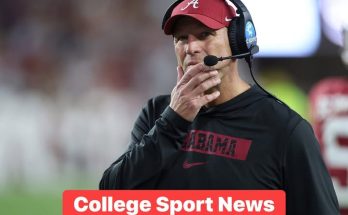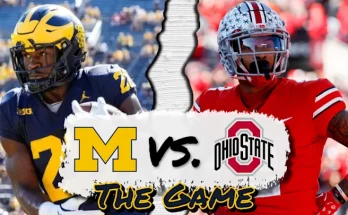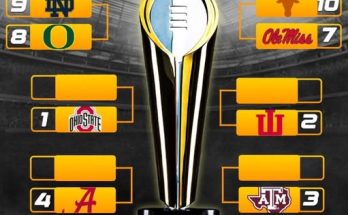The Indiana Pacers have not always been the flashiest franchise in the NBA, but they’ve consistently remained one of the league’s smartest and most tactically astute. As the NBA offseason rolled on and superstars dominated headlines with blockbuster trades, big-market drama, and max contract extensions, one trade by the Pacers went largely unnoticed. Yet, that same trade has now been named one of the best under-the-radar moves of the NBA offseason—a designation that reflects the franchise’s ability to quietly improve its roster while avoiding the costly risks that often accompany major splashes. This deal didn’t send shockwaves across the league or break social media platforms, but it did what every smart trade should do: elevate the team’s ceiling without sacrificing its core. For a team that is still developing its young stars and working toward sustained playoff success, the Pacers might have just pulled off a masterclass in roster building.
At the center of this accolade is the Pacers’ acquisition of veteran forward and defensive specialist Jae’Sean Tate from the Houston Rockets in exchange for a future second-round pick and cash considerations. The move wasn’t earth-shattering. It didn’t come with ESPN push notifications or dominate NBA talk shows. But within league circles, and among sharp analysts, the trade was immediately recognized as a low-cost, high-value move with the potential to have an outsized impact on the Pacers’ rotation. Tate, known for his gritty defense, high motor, and underrated playmaking, fits the exact mold of player Indiana needs alongside its rising star point guard Tyrese Haliburton and newly extended All-Star big man Pascal Siakam.
The Pacers’ decision to add a player like Tate speaks volumes about their approach to building a roster. They’re not hunting headlines—they’re targeting functionality. Tate isn’t just a 3-and-D guy. He’s a utility wing with the ability to defend multiple positions, initiate offense in transition, and play within a team-oriented system. He brings the kind of toughness and versatility that can swing a playoff series. In today’s NBA, where positional flexibility and defensive intensity are at a premium, Tate represents one of the most undervalued player archetypes. At 6-foot-4 and a sturdy 230 pounds, he has the physicality to bang with big forwards and the agility to stay in front of quick guards. He may not be a volume shooter, but his offensive game is efficient, especially when attacking closeouts and cutting off the ball.
This trade also sends a strong message about how much Indiana values roster balance. Too often, teams overload with offense or try to chase shooting at the expense of defense. The Pacers, by contrast, recognized a need on the wing for a glue guy who can help bridge their first and second units. With Haliburton commanding the offense and Siakam anchoring the frontcourt, the Pacers needed someone who could slot in without needing touches, defend at a high level, and make the right play. Tate offers all that and more, and his presence could allow Indiana to explore more dynamic lineups. Whether it’s going small with Siakam at the five or shifting defensive matchups to take pressure off Haliburton, Tate’s skill set creates optionality.
Indiana’s front office, led by Kevin Pritchard and Chad Buchanan, has been building this roster methodically. They’ve accumulated draft assets, developed young talent like Bennedict Mathurin, and remained flexible with their cap sheet. Their acquisition of Siakam during the previous season was a more headline-grabbing move, but it came at the right time. Now, this offseason, while others were overpaying for marginal upgrades or gambling on chemistry with star pairings, the Pacers stayed disciplined. Adding Tate is not about flash—it’s about fit. It’s about role allocation. And it’s about depth, which is arguably the most crucial factor in a deep playoff run.
Another important layer to this trade is how it positions Indiana within the Eastern Conference hierarchy. With Boston and Milwaukee entrenched at the top, and Philadelphia dealing with uncertainty, the middle of the East is wide open. The Knicks, Cavaliers, and Heat all have questions surrounding roster cohesion, injuries, or contract negotiations. The Pacers, meanwhile, are quietly becoming one of the most stable and upwardly mobile teams in the conference. They have youth, athleticism, a budding superstar in Haliburton, and now a veteran utility man who can help win the gritty possessions that often decide playoff games.
What separates this move from many others this offseason is its asymmetry in value versus cost. Tate was effectively acquired for a second-rounder and cash—essentially a rounding error in today’s NBA economy. For that price, the Pacers added a player who is not only playoff-rotation ready but also comes with a favorable contract. His deal is team-friendly, providing Indiana with both short-term impact and long-term flexibility. In an age when teams are penalized heavily for exceeding salary thresholds and when the new collective bargaining agreement makes every roster spot count, getting a rotation-caliber player on a reasonable deal is a massive win.
Moreover, Tate fits the cultural ethos of this Pacers squad. Head coach Rick Carlisle demands toughness, defensive effort, and unselfishness. Tate checks all those boxes. He doesn’t need 15 shots to be effective. He’s not hunting stats. He plays winning basketball. That attitude is infectious in a locker room, especially among younger players. For someone like Mathurin, who is developing his all-around game, or Jarace Walker, who’s still adjusting to the NBA pace, having a veteran like Tate to model effort and discipline could pay dividends beyond the box score.
There’s also the underrated aspect of playoff insurance. The postseason is brutal, and injuries are an unfortunate but inevitable part of the journey. Having a player like Tate, who can step into various roles without the offense collapsing or the defense falling apart, is critical. He can guard the opposing team’s best scorer for stretches, he can bring energy off the bench, and he can facilitate in small-ball lineups. That kind of insurance is what differentiates teams who go home in the first round from those who make a deep run.
If there’s one concern or limitation with the move, it’s Tate’s inconsistent perimeter shooting. He’s not a knockdown three-point shooter, and that can limit spacing if he’s playing alongside non-shooters. However, the Pacers have enough floor spacing with Haliburton, Mathurin, Andrew Nembhard, and Myles Turner that they can afford to have one non-shooter on the floor in spurts. And Carlisle’s offensive schemes are designed to maximize movement and off-ball cutting—two areas where Tate excels. So even if he’s not spacing the floor in the traditional sense, he’s still contributing to offensive flow and continuity.
In an offseason where the headlines were stolen by teams like the Lakers, 76ers, and Warriors—who made splashier but more polarizing moves—the Pacers made one of the most efficient trades of the summer. Efficiency matters. Quiet competence matters. And when the dust settles and games are played, it’s often the teams who avoided the drama and focused on basketball fit that end up winning. The Tate trade is not the kind of move that gets you on the cover of Sports Illustrated, but it is the kind of move that can win you a Game 6 on the road in the first round—or help you steal momentum in a tight playoff series. Those wins are built in July and August, not just April and May.
For Pacers fans, this trade represents a continuation of a larger trend. This front office has consistently shown it understands modern basketball, values chemistry and culture, and refuses to overpay for uncertain upside. In an era of volatility—where player empowerment, trade demands, and supermax contracts often destabilize teams—the Pacers have built something rare: a sustainable, scalable, and quietly dangerous roster. With Tyrese Haliburton taking another leap and Pascal Siakam anchoring the frontcourt, the pieces around them don’t need to be stars—they just need to fit. And Jae’Sean Tate fits better than most.
As the season approaches, analysts and fans will continue to focus on the headline-grabbing rosters in Los Angeles, Miami, or New York. But when April rolls around and the playoff matchups are set, don’t be surprised if Indiana is right in the thick of things—gritty, balanced, and capable of pulling off an upset or two. And if they do, this under-the-radar trade for Tate might just be remembered as one of the hidden turning points that helped them get there.


